
views
Choosing a Color and Design
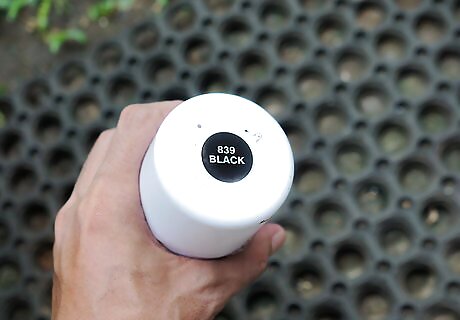
Use the paint code to find an exact color match. If you want your fender flares to match the rest of your vehicle, you can find the vehicle's paint code in the manual or by contacting the car or truck manufacturer. Finding the paint code will allow you to go out and purchase the same exact color as the rest of your car. For example, Clover Green's color code for a 2000 Acura Integra is G-95P.

Select a paint code that matches your car's trim. Painting the car's trim the same color as your fender flares will give your vehicle a uniform look. Contact the vehicle's manufacturer or look inside of your user manual to find the color code for your vehicle's trim. Painting your fender flares the same color as the vehicle's trim will make them look like they came with the vehicle in most cases. Modern vehicle paint is often fade-resistant. If you think your car's paint is fading, buffing the car with a cleaning product will remove airborne contaminants and revive the luster of your paint job.
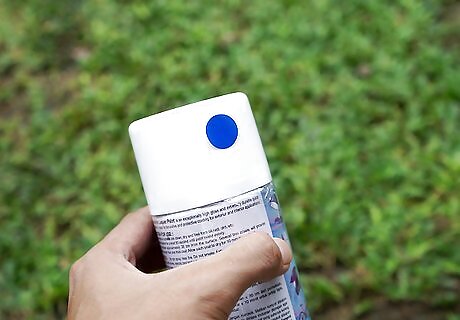
Paint your flares a different color for a bold look. If you are going for a more bold or creative look, you can paint your flares a completely different color than the rest of your vehicle. Choose a bright fluorescent color for an upbeat feeling or a more muted color for a laid-back look. If you want your flares to stand out, select a color that contrasts with the vehicle's paint job. For instance, red, yellow, and white fender flares will pop on a black car. Black fender flares look good on a variety of different vehicle colors.

Purchase stencils for a custom look. You can go out and purchase stencils that you can use to paint certain designs, such as flames, on your vehicle’s fender flares. Look for these stencils online or at automotive shops. Examples of stencils you can use include stars, letters, or something that blends in with an existing custom paint job.
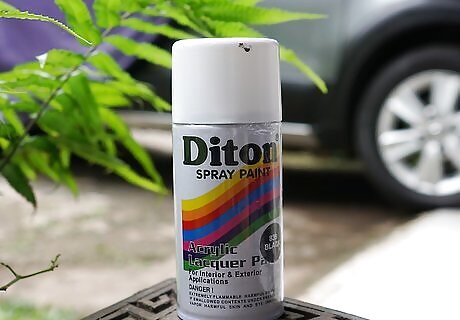
Purchase an enamel or polyurethane automotive paint. It’s important that you don’t use traditional spray paint to paint your fenders or it may not look good. Instead, go online or to an automotive store and purchase an enamel or polyurethane automotive paint and primer. These paints will come in a spray paint form. If you’re unsure of what to buy, ask a store associate for help.
Sanding the Flares

Remove the fender flares from the vehicle. Fender flares are attached to your car by bolts inside of your wheel well. To remove them, unscrew all of the bolts connecting the fender flare to the vehicle with a socket wrench. The fender will still be attached to the car by small plastic clips, but these clips can be detached easily by pulling the fender away from your vehicle.
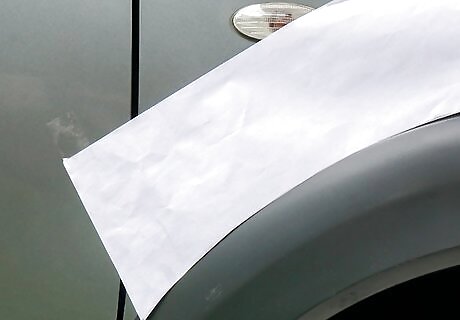
Drape a tarp and tape off your flares if you don’t want to detach them. Keep in mind that if you don’t detach your fender flares, you can only paint the outside of them. Apply electrical tape along the area where the fender flares and car meet. Drape a large piece of plastic over your car and apply another piece of tape along the edge of the tarp so that it protects areas of your vehicle that you don’t want to paint.
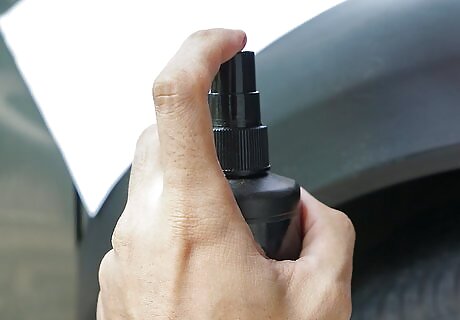
Clean the outer surface of the flares with degreaser. Dust on the flares will cause the paint to crack and peel. Use an all-purpose automotive degreaser to thoroughly wipe down the outer surface of the flares. Do not use a lacquer thinner reducer as your degreaser because it will make the flares hard to paint.

Sand down the fender flare with 200 grit sandpaper. Move in a back and forth motion over the surface of your fender flares. Try to work out any imperfections or bumps in the flares so that the surface is as smooth as possible. You can also do a light sanding with a 2000 grit Scotch Brite pad if you're worried that you'll scratch your fender flares.
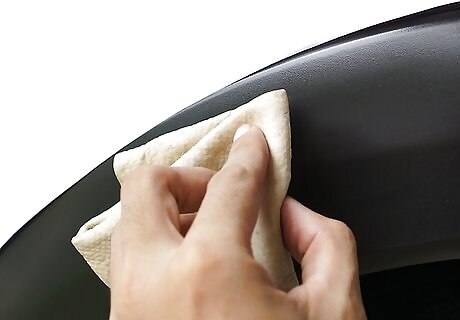
Wipe the surface down with a tack cloth. Wipe down the area with a tack cloth to remove any debris or dust that was created from sanding. Make sure that you get all of the dust off or it will be trapped under the paint.
Applying the Basecoat
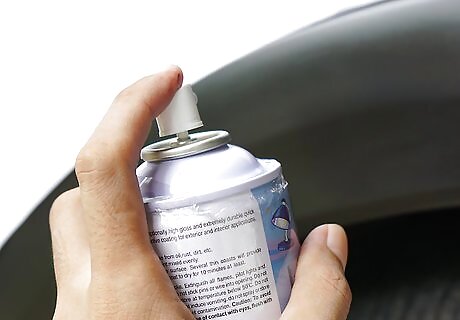
Spray primer onto the surface of your fender flares. Lay the flares down on a piece of plastic or newspaper so that you don’t get paint on your floor. Hold the primer can 1–2 inches (2.5–5.1 cm) away from the flares and push the button on the top of the can. Move your arm in long sweeping motions and try to cover as much of the flare as you can in one sweep. Continue spraying the flares with the primer until you’ve applied a full coat. If you’ve detached the flares, spray a coat of primer inside the interior of the fender flares. Work in a well-ventilated area and wear a respirator when using spray paint.
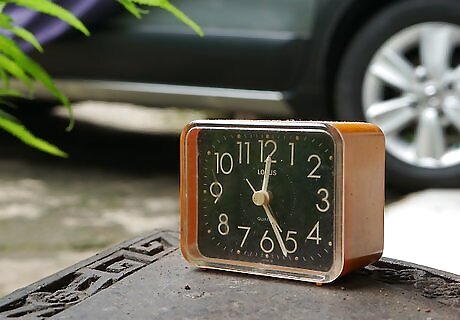
Let the primer dry for at least 30 minutes. After 30 minutes, the flares should be dry to the touch. Run your hand across the surface of the flares and make sure that they are dry before moving on. The surface may feel sticky, but the primer shouldn’t come off on your hands.
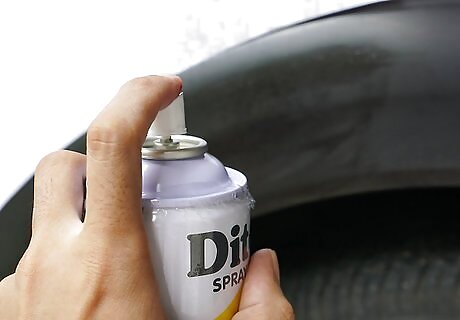
Apply spray paint to the fender flares. Hold the spray paint 1–2 inches (2.5–5.1 cm) away from the flares and press the button on the top of the can in long, sweeping strokes. Continue to cover the entire surface of the fender flares until you’ve applied a single coat. Avoid spraying in small, short bursts or your flares may get a splotchy look.
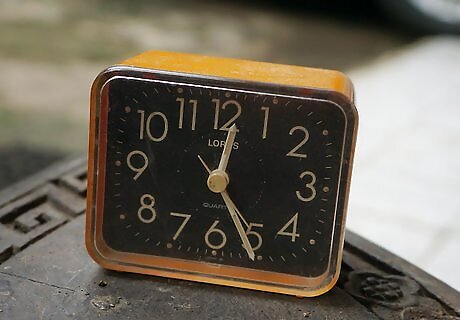
Let the paint dry for an hour. The surface of the flares should be dry, and paint should not transfer onto your hand when you touch it.
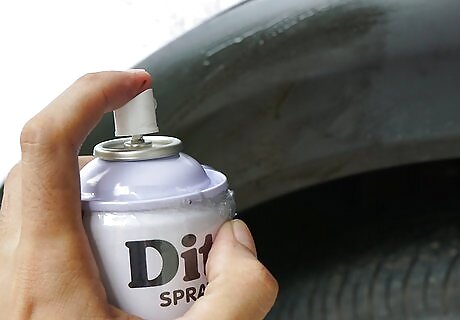
Apply additional coats of spray paint to the flares. Apply the second coat of paint the same way you applied the first coat. This coat will make the paint appear darker and richer than it did with just a single coat. Let the fender frames dry and repeat the process until your fender flares are the hue that you want.

Let the paint dry overnight. The paint and basecoat should be completely dry the next day. If you're happy with a plain base coat, you're done painting your fender flares. If you want to further detail your flares, you'll need to tape stencils to the flares and apply more paint.
Applying Custom Designs with Stencils
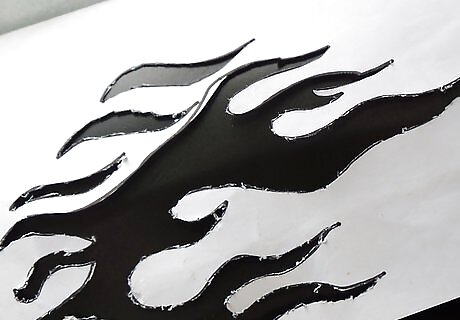
Tape your stencils in place. Position the stencil over the area where you’d like the design to go. Then, apply painters tape to the outer edge of the stencil to hold it in place. Make sure that the stencil is firmly in place so that it doesn’t shift around when you start to paint.

Apply paint over the stencils to fill them in. Hold the spray paint 1–2 inches (2.5–5.1 cm) away from the fender flares and use short accurate bursts to fill in the stencil. Continue to do this until you've filled in the entire stencil with a coat of paint. It's important that you don't go outside of the outer edges of the stencil or your custom paint job will look sloppy.

Add additional coats to deepen the color. Allow the paint to partially dry for 30 minutes to an hour and apply another coat using the same technique. Repeat the process until the color inside of the stencil is the hue that you want.

Remove the stencils and let the paint dry overnight. Carefully peel back the tape you used to hold the stencil in place and remove the stencil from the flares. Be careful not to smudge the paint as you do this. The automotive spray paint requires a full 24-hour period to dry off. Don't wait to remove the stencil or the paint may crack or peel if it's allowed to fully dry.
















Comments
0 comment